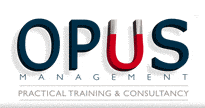
Think back to the first manager you had in your own career... was this person a good match for you? Did he/she take time to get to know you as an individual and then train, mentor, and support you? Did he/she give you feedback, correct your performance when this was needed in a fair but firm way? What did you learn about yourself as a result? How committed were you to the job, the organization and the team, as a result?
Way back in 1999, when "First, Break All the Rules"[1] came out, we learned that the research overwhelming showed that People leave managers, not companies, and that the single most important influence on an employee's satisfaction with their jobs is their relationship with their immediate manager. The manager determines the work environment, sets expectations, trusts you, invests in you - no amount of perks or company loyalty programs can make up for employee/manager mismatch. We have leadership development programs, employee engagement programs, performance evaluation, and a whole host of institutionalized methods for building management bench-strength but we all know that there some managers are simply not fully aware of the impact of their behavior, undermine the culture, and thus drive good people away. In other cases, some managers can be reasonably skilled but simply not a good fit for a particular employee, especially for someone who has specific expectations of what he or she wants in a capable leader.
Many organizations use assessments for hiring (i.e. job-fit) but many don't look at the fit between the potential employee and the manager (i.e. employee-manager fit). We think they should. Think about managers you have had in the past - who "had your back" when you needed it? Who challenged you, helped you to develop, acquire new knowledge and skills, introduce you to useful contacts, help you visibility with key people in the organization? Early experiences with managers are important to all of us, especially early on in our careers. Human Resources professionals should take this partnership (i.e. employee-manager) seriously and help create strong relationships that will benefit the organization long-term.

Consider this potential matchup between a hot prospect (i.e. well-qualified applicant) and the hiring manager. Let's assume that we have a great candidate, named Connie, who has ticked all the boxes. That is, she has the qualifications needed for success in the job, interviewed well, and has the potential to help Company X soar into the future. If hired, she will report to Manny Manager, who has been involved in the hiring process, also took the Harrison Assessment in the past, and has his own unique profile as an individual and a manager.
Connie took the Harrison Assessment as part of the hiring process and her results show that her top five, work-related preferences include:
In other words, Connie:
Since Manny took the Harrison himself when he was hired as manager recently, we have his profile, as well. His top five work-related preferences include:
In other words, Manny:
Reviewing the life themes of each of these individuals gives us insight into what factors drive each of them in their work, which is useful. We have to go further to determine where Connie and Manny might gel, or not.
Manny has only moderate optimism, whereas Connie has very high optimism. This is a possible disconnect for them as a "match made in heaven." Connie may become uninspired with Manny's skepticism, while Manny may find Connie's soaring positive attitude to be a bit naive at times. It would be a good idea for them to discuss their different styles when it comes to outlook.
Connie is looking for a deep, personal connection with her manager (high warmth/empathy, high wants capable leader and high wants recognition tells us this). Manny has a moderately low score on warmth/empathy and a high score on enforcing. As a result, Connie may not experience enough caring for her as a contributor from Manny unless Manny understands her needs and makes an effort to provide her with the authentic, sincere, and specific recognition she craves and by which she is motivated. Fortunately, Manny is very frank and so willing to be concise, clear and to-the-point. He is also open-minded. We may be able to sell Manny on the need for him to be on-the-lookout for Connie's positive contributions and make a special effort to tell her when she does something well. This will play into Manny's frankness as well as Connie's need for recognition and a relationship with her manager.
Connie is looking to collaborate. Manny is smart to include Connie's input when appropriate, so that she feels included in the decision-making process. Further, Manny should look out for opportunities with others on the team or beyond the team for Connie to contribute and collaborate. This will feed Connie's motivation and also benefit the organization since we already know that Connie is well qualified for the position.
These are just a few of the issues and discussion points we can glean from a good assessment. Taking information like this and talking about it with the relevant parties sets up much better prospects for Connie and Manny's success, as well as the long-term benefits for the organization.
Use assessments early on to examine this match more closely and identify gaps / potential problem areas and be proactive about building this relationship to increase employee engagement, retention and productivity.
[1] First, Break All the Rules: What the World's Greatest Managers Do Differently, by Marcus Buckingham & Curt Coffman, 1999, Simon & Schuster


